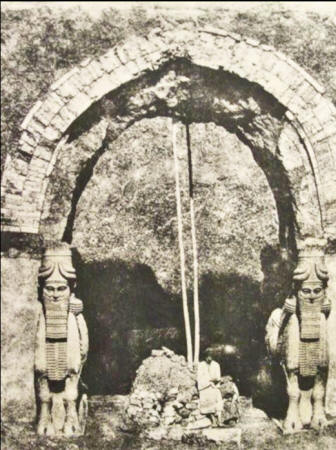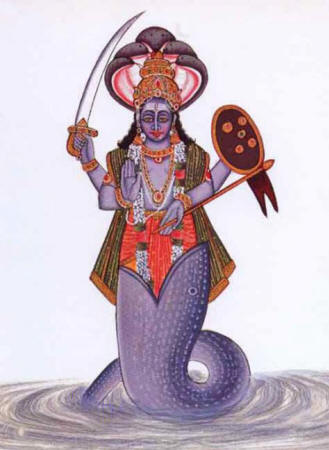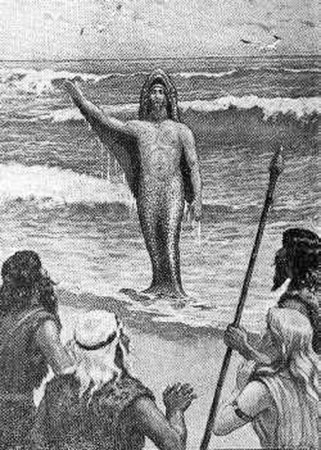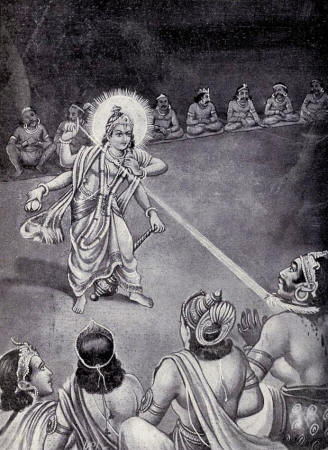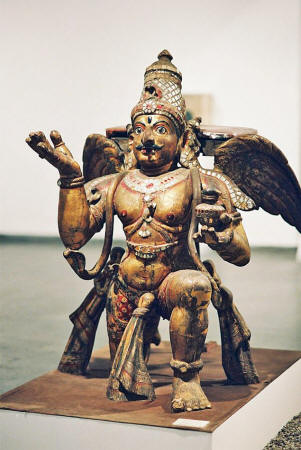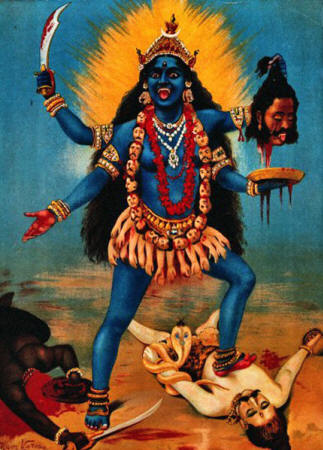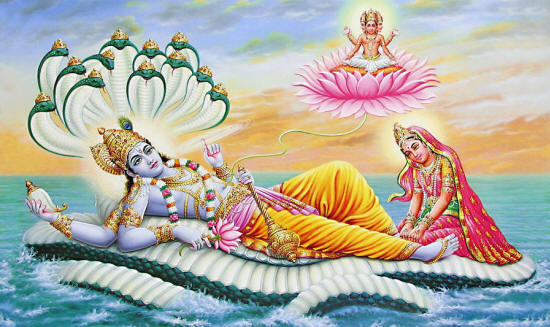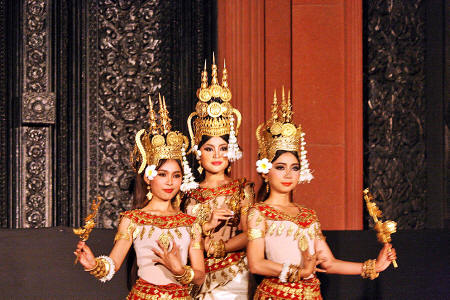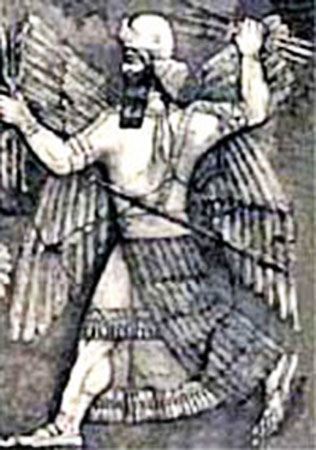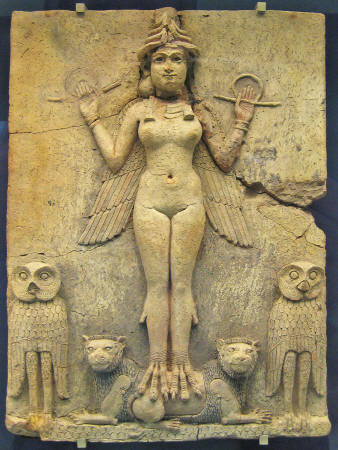|
from WesPenre Website
People are constantly sending me things they find being of interest, hoping that it may help me in my research, and very often, I must say, this is the case. I can't name you all here in my paper, and many of you would probably prefer that I don't, but I want to take this opportunity to thank you all for making such an effort to help out.
On occasion, it has actually been so
interesting that I have spent days to research further what you've
sent me. I'm almost always so busy that I feel I don't have the time
I'd like to personally thank you all, so I'll do it now - thank you
very much (you know who you are!)
Assyrian Gateway
It would be quite educational to study each one of them in order to understand the symbolism and to figure out who is who amongst the gods who are depicted there. It's a visual way to learn more about the Sumerian gods - I know there are many people out there for whom the easiest way to learn is by visualizing things.
That's the reason why I have pictures in
my papers - otherwise, they would almost do as well without.
I spent some time on that site myself
and found it intriguing, so I don't want to deprive you from doing
the same thing in case you would enjoy these kinds of things.
The Vedas are so extensive and interesting to dig into, and the majority of it - if not all - is directly connected to what we've discussed earlier.
It's more complex than any of the previous levels, but I have done my absolute best to simplify where I can. If you read through sections that seem hard to grasp, just do your best, and hopefully, as you move along in the texts, things will soon start to make sense.
My hope is that the reader does not skip
over any sections because they are all connected in one way or
another.
Once the reader has grasped this entire concept, he or she will clearly understand mythology and how it works. Never again will any of us say that mythology is unimportant, or has very little to do with ancient history and visitation of star beings.
Regardless what some so-called
"scholars" or others might say, the reader will be able to hold his
or her position in space and defend what he or she has learned. It's
powerful information!
Fortunately - for us - all these names are basically referring back to only a few gods - very similar to what we are used to from Level IV, where all these different gods could be broken down to just a few important deities, who show up over and over again in our history.
When we understand this, these mythologies and religions get an entirely new meaning, and that's the entire purpose for it - we get to take a peek behind the curtain in the Wizard of Oz, and we will see who is actually hiding there.
By the way, this was exactly the purpose with the book, The Wonderful Wizard of Oz.
I could say with confidence that L. Frank Baum, who wrote the book and published it on May 17, 1900, had inside information. He knew that there is a "secret wizard" behind the curtain in our reality as well, who is running the show by instigating fear and illusions. He also knew that this wizard (the Powers That Be) is very afraid of us and terrified to be exposed by the large public.
The public at that time, however, was not at all ready for that book and couldn't see the real meaning of it.
As with any great story, however, we can
read it on different levels. Not until more than a hundred years
after its publication did people start grasping what L.F. Baum
had been writing about.
L. Frank Baum in 1911
- the author of the Oz Series.
Some say Baum was working for the Illuminati, and perhaps he was, but many authors, such as Jules Verne and H.G. Wells, were initiated in secret societies, and their way of informing the public was through their books.
I don't think everything is black and white, and it's up for debate what the original intentions behind such books as the Oz Series might have been. The Powers That Be love to hide the truth in plain sight, and a brilliant medium for that is in literature.
Hence, it is quite impossible to say,
unless we start a concentrated research on Baum and other authors,
if they were part of
the Global Elite or if they used
novels to expose to the public to what they themselves had
discovered.
II. Human Evolution
According to the Vedic Literature
One such union was carried out between a human hero, Bhīma, and Hidimbā, a Rākṣasa female. This is described in the Vedic text, Mahābhārata. Some readers may remember my description of the Rākṣasas in Paper #3, where I compared them with the wolfen-reptilian race from Sirius - a species I also discussed in Level II.
These beings are - both according to the Vedas and my own research - very repulsive, and right-out dangerous, as they are both cannibalistic and lack any human sense of remorse.
Still, the human hero had intercourse with one of the Rākṣasa women, and a hybrid offspring was the result. Although this could be considered genetic manipulation, this is not how the Mahābhārata describes it:
Apparently, the odd couple stayed together while the child was little; thereafter, Hidimbā, the Rākṣasa woman, took off with the strange-looking hybrid child.
The name of the child was Ghaṭotkaca, which means "Shiny-as-a-pot." We're told that although he looked more like a Rākṣasa, he was deeply loved amongst humans, which probably means that the boy had more human characteristics than Rākṣasī in general.
Nevertheless, here is the oddity (in author Richard L. Thompson's words):
Obviously, this appears to be genetic tinkering.
Indra, who is mentioned in this quote, is Marduk's counterpart, as revealed in Paper #4, and his motive for becoming involved in this interbreeding between two species was to protect his own hybrid son, the hero Arjuna, who is mentioned often in the Vedas.
(As a side note, all humanoid species in the Vedic texts are, in general, able to interbreed and produce fertile offspring. This, Thompson concludes, means that all these races must be genetically related to each other, and this shows to, indeed, be the case!
This is interesting, to say the least, but the Vedas indicate that the reason we can reproduce with any and all humanoid races in the Universe is because of evolution.
This is what I mean when I say that the
Vedas don't support genetic engineering/manipulation (we will come
to cloning later).
Even if the Sages toned the genetic manipulation down, the fact remains - Lord Vishnu and Lord Shiva, in all their different forms and avatars, are made up of energy (and we're talking about their interdimensional bodies now), and therefore, they contain DNA and RNA.
The Vedas don't make any secret that the
two main Vedic gods (but also other lesser gods) interbred with the
existing humans on Earth. This, per definition, is genetic
manipulation.
The confusion is easily explained if we are aware of Planet Earth's real history, going further back in time from when the AIF (Vishnu and Shiva) came into the picture.
Brahmā is such a general term, so really - which Brahmā are we discussing, and in which context? Well, with the knowledge that the reader has at this point, the last sentence in Quote #3 becomes quite obvious - that sentence indicates genetic manipulation!
The "powers" that Thompson is talking about is simply the genetic science that Lord Vishnu/Lucifer/En.ki learned from when he had been a pupil of his mother - the Goddess.
Still, the Goddess didn't teach her son everything, and therefore, Lord Vishnu (as Brahmā) didn't know how to create a species from scratch - he had to have something existent to work with, so he started working with the existing "ape-men," which generally means the Neanderthals, and later, with Homo Erectus.
If you, the reader, review Thompson's
statement above, it will now have an entirely new meaning, unless
you grasped it already after the first read. To Thompson (and many
others), it's a riddle because he is not aware that the real
Creation of mankind took place before Lord Vishnu and his group of
demigods entered the stage.
By illustrating Thompson's thoughts, the reader may potentially have an easier time discussing these matter with others, who are missing some stages in the learning process.
I think this is how many people think, but with the knowledge gained in these papers, the extended information on what happened before the AIF arrived nicely puts the puzzle pieces together. I am sure the reader can see this, too.
Without this information, there will be
confusion and very hard for the truth-seeker to make sense of the
Creation process.
There are more contradictions in the Vedas concerning genetic manipulation versus no genetic manipulation.
However, there is one section in particular that describes genetic manipulation of the kind I have emphasized in previous levels of learning. I argued that not only did Lord En.ki and his scientists focus on creating a human species for slave labor, but they also tested many subspecies, looking far from human.
The reason for doing so was multifaceted - sometimes they did it "for fun," other times they did it to see how far they could take their science, and there were other times when they needed other types of beings to assist them with chores other than what would suit a human.
One such example would be the centaur - a working horse with a human (mainly male) head - who they could use to transport things from one location to another when the distance was not too far.
I would assume that the reason for the
human head was to create a creature with higher intelligence than a
regular horse.
In doing so, a section of typical genetic manipulation is described:
It sounds like the Sages took DNA from the King's thighs, used a certain method that is not detailed, and created a totally different being.
The story continues, and apparently, the Sages also created other beings out of King Vena's body, who looked different from both the King and the dwarf.
According to the Rig Veda and the Purāṇa, cloning was done as far back as 14,000 years ago! [8]
In reality, it was done much further
back than that, but it's interesting enough that there are records
going back 14,000 years, describing something that modern science
thought was impossible just half a century ago.
Dr. P. V. Vartak
Bhāgavata Purāṇa and Rig Veda are full of stories openly related to cloning, and they would be too many to include here. One of the most interesting, however, is from the Purāṇa and speaks of a being, Daksha, who was asked by the Supreme to procreate living creatures.
The texts say that he produced 10,000 sons by cloning his own cells (and some translations say that these 10,000 clones were all created from the cells of his son).
These clones were called Hayashvas (Joyful Horses).
Again, if we, for argument's sake,
disregard that there was at least one intelligent race of human
beings on Earth before Lord Vishnu appeared here, one can say that
these clones can be considered the first human clones, and all of
them are said, not only to have been identical, but also to be
ascetics.
The third time, Daksha's wife, Ashini, gave birth to sixty daughters. Of these, thirteen are said to have married a divine personage called Kashyapa (it's interesting how this being keeps popping up every so often). [11]
Kashyapa and his wife had offspring from
having normal intercourse - thus, every human being after that is
therefore an offspring of Kashyapa and Daksha's thirteen daughters.
In other words, as soon as normal intercourse came into the picture,
it instantly ended the cloning process, and each body after that was
unique in its characteristics.
Wikipedia says:
The above short paragraph comes across as utterly confusing to the average person, but it gives us a lot of valuable information.
It says that Kashyapa is the "father" of all the groups of beings which I discussed with you in a previous paper.
Thus, the Vedas state that this person, through cloning or genetic manipulation, created all these monsters and men. There are many reason not to believe this to be true because these groups of beings originate in different star systems and also fit very well into the research done in Level IV.
However, important in Quote #8 is that
Kashyapa "received the earth," and "earth came to be known as 'Kashapai.'"
This sounds very similar to a certain Lord En.ki.
Thus, hidden in plain sight, it says in
the Vedas that Lord En.ki is the creator of mankind! In the Vedic
texts, En.ki is known as Lord Vishnu, and
moreover, Kashyapa and En.ki more than likely seem to be one
and the same.
A person who is into researching the UFO phenomenon, alien abductions, and the exopolitical scene, doesn't need to do so for very long until he or she stumbles upon the idea that cosmic beings - regardless whether they are humanoid or reptilian in appearance - can interbreed with humanity and create hybrid offspring.
Very often, this is taken almost for granted - something "everybody knows" these days. This is also something that stems from the Vedas, where it's said that humanoid races in the Universe can interbreed and create fertile offspring. [14]
However, it doesn't say anything about reptilian beings, unless they, too, are considered "humanoid." Then, when the researcher digs a little deeper, he or she will run into Sitchin's work or that of other researchers, having similar views as Sitchin had, i.e. that humanity was created by the "Anunnaki" through genetic engineering.
Still, according to the same category of researchers, the ET visitors also seemed to be able to interbreed with humanity, creating hybrid, fertile offspring.
This is to be understood as being
possible because humanity already had much of the visitors' DNA.
However, even other races, who were not directly involved with
"creating" Homo sapiens (sapiens), mysteriously, seem to be able to
create fertile - and sometimes unfertile - offspring with us humans.
In almost all cases, the visitors - wherever they may have originated from - are interdimensional. This means that to us, they are just "energy beings." They may consider themselves having a solid body, but this body is much less dense than ours (the analogy with the computer signals and the printed out paper again comes in handy).
Thus, it is not plausible that
interbreeding can happen between races in that sense.
I am saying this to make the reader aware of the fact - it's obvious when we think back on what we have learned, but sometimes, we humans still don't put two and two together, so a thing like this is definitely worth mentioning.
I'm sure there are many people who
haven't connected these dots, albeit they may have read the papers.
III. The Lord of
Karma, The Shadow Planet, and the Black Sun
I am sure the reader will find this
interesting, and even better - we are about to expand our knowledge
on how the AIF is keeping us trapped. It's all explained in the
Vedas.
Here is a new god we need to discuss. Don't worry - you don't need to memorize all these gods.
In the future, if I have to refer back
to them again, I will give references back to which paper I exposed
them in and also give a brief synopsis in the future paper, so the
reader can follow the trail.
Vishnu is of course En.ki - we have already established that - but not any incarnation of En.ki - here we get a reference to the Fish god depiction of the Orion Lord - he who goes under many names, such as,
What is it that we have learned here?
We now know that Ketu,
We also know that all these entities are different incarnations of Lord En.ki, who is also known as Ea and Lucifer (still, these are only a very few of his personae).
BUT, foremost, we know that En.ki, in
the incarnation as the Fish god, has something to do with our
karma. This, I believe, is very important and interesting.
Well, that doesn't sound too bad, does it?
Remember that when you see the description of a god, probably regardless of religion or myth, and this god is associated with "wisdom," you are reading about Lord En.ki. He is the snake in the Garden of Edin, and the snake is associated (amongst other things) with wisdom (but also deception, manipulation, and betrayal).
He may have wisdom, but he is very
selective with whom he shares this wisdom.
The era of excessive gold mining was over (although mining was still going on, both here on Earth and in other places in the solar system), and En.ki needed mankind for other purposes. Some people point at these instances when En.ki taught mankind a lot of things and used this as proof that En.ki was benevolent and wanted good things for mankind.
The way I see it, though, based on the research I've done, is that En.ki and his cohorts taught mankind exactly what they wanted us to know and nothing more.
There was always a purpose behind these
schoolings, and albeit one could say that mankind benefited from
them in the sense that we learned more things - things related both
to the material and the spiritual - the reason for the education was
always "Service to Self," for those who want to use this term - in
other words, the ones who gained from the education in the long run
were the Alien Invader Force - the AIF!
A nakshatra is one of 27 (sometimes 28)
sectors along the ecliptic [17] and is associated
with Hindu astrology. Ketu. Does this being, with fish tail,
coming up from the ocean,
Compare with the next picture.
Oannes, "teacher"
coming up from the ocean.
Now, in order to summarize this - Ketu is associated with supernatural influences regarding karma (good and bad), he is the Lord of three lunar mansions, and is referred to as a "shadow" planet.
The word "shadow" in this sense would mean a "reflection" of something that is there, but can't physically be seen, but people here on Earth feel the effects from it. This makes me think about a link between "shadow planets," the "unseen," and the "real" world.
We begin to see how "unseen" shadow
planets affect the lives of everyday man via "lunar mansions," or
"lunar nodes."
When he later lost his manhood in a
battle with his brother in
the Rigelian War, he let his
fertile son, Marduk, take over the role as Nergal.
After the following evidence of this, we'll get to the point, and I am going to summarize what all this means.
As we can see - when it suited Lord En.ki, he and his son switched places...
This is quite significant because now we have another important link - Indra (Marduk) getting associated with the Shadow Planet, i.e. the "unseen." If we extend this thread, who in Egypt was connected with the "unseen?"
It was Ra - "Amon Ra," which means "Hidden Ra!" Moreover, "Ra" in Egypt is connected with the Sun (Ra being the sun god), and here we are talking about a shadow planet.
If the reader recalls from Paper #3 - in the Vedas, suns (stars) and planets are often the same thing. Let's just keep that in mind for now. Below is some more association to whom Indra is, in comparison to other religions and myths.
We notice that Indra is the equivalent not only of Marduk, but also of Thor in Norse mythology, Zeus in Greece, and Dionysus/Bacchus in Roman-Greek mythology.
Now, concerning the Sun, which is connected to Indra and Marduk Ra (Amon Ra):
Here is another Hindu god, "paired with Ketu."
From what we so far have concluded, Ketu can be either En.ki or Marduk, respectively, because they took over each other's persona at times. In this quote, Rahu is related to the Sun, and paired with Ketu, which more than likely would associate him with Marduk, the Sun god. In Hindu tradition, he is said to be swallowing the Sun, causing eclipses.
However, as an analogy, swallowing the sun can also mean making it "unseen," as we talked about earlier.
We start seeing a connection between the Shadow Planet and the "Black Sun" that the Nazis talked about in their secret religion, but is also mentioned a lot in many secret societies, such as the German Thule Gesellschaft and the Vril Society.
The Black Sun is here mentioned as the Shadow Planet.
Does the reader begin to see a
correlation between the Shadow Planet/the Black Sun, and
dark matter?
We briefly mentioned Shaktism in a previous paper as originally being the Religion of the Mother Goddess, but it was hijacked by the AIF, and instead of acknowledging the real Primordial Creatrix as,
...took over that role.
With this in mind, we have a direct link between Ketu, Rahu, and Shakti:
Vedic literature can be quite complex at
times in order to transmit the message it's supposed to, so please
bear with me. Things will get easier to understand as we go along. Vishnu (as Mohini) beheading Rahu
with his Sudarshana
chakra
[see Quote #13])
In this case - in its own allegorical form - we are recapitulating what we discussed just previous to Quote #15.
We have Ketu (En.ki) transforming into
Rahu (Marduk's "transformation" into Ketu), and lastly Rahu's/Marduk's
association with Shakti/Ereškigal. Rahu and Shakti are not the same
deity, which will be clear if we read this quote in its entirety. It
is simply telling the correlation between these three beings in an
allegorical form.
The Vedas, however, also gives hints that "Maya," the "illusion" (hologram), which is also referred to as gross matter, is what we should beware of.
Still, per definition, real
manipulation, i.e. the source of it, is not what is seen, but the
"unseen." The hints are many but are yet not understood by the
majority who study the Vedas and Hindu religion in general - the
manipulation is originating from dark matter, i.e.
the KHAA.
The answer is fortunately no, but just because he is the instigator of the 4% Universe - the universe we can perceive with our 5 senses - it doesn't mean that he is stuck in Maya.
Lucifer, if we go back in time, was cast out of "Heaven the Orion Empire," but not from the KHAA. Since the rebellion, he has conquered a lot of space and created his own empire, albeit not nearly as vast as Orion.
I have mentioned quite a few asterisms, stars, planets, and spatial regions that now belong to Lucifer, and I have showed pictures of many of these regions in the papers, so the reader can get a better visual perspective of what I'm writing about, but however vast we consider the Milky Way Galaxy and the rest of the perceived Universe to be, it's only a tiny part of what is really out there.
The real empires, consisting of x number of star systems, are counted from within the KHAA, not from the 4% Universe perspective. Hence, we still have a very limited idea of how huge both Lucifer's and The Goddess' empires really are.
Sooner or later we all have to grasp these concepts, and the sooner we can start confronting these enormous spatial distances and quantities, the better. We do this, not by looking up into the night-sky, trying to see beyond what we perceive is up there, but to look inside.
This whole, enormous universe we call
the KHAA or the VOID, is basically inside of us all.
Instead, to get a better picture of how it really works, we can think of a float at the end of a fishing rod. Once we throw out the line, the float sinks halfway. Half of it stays above the surface and half of it stays below.
If we think of the float as a planet, a star, etc., we can get a picture of how it works. The part above the surface is what we are allowed to perceive with our five senses, but there is another, unseen part of the celestial body that extends into the KHAA.
That part we can't see...
IV. Mother Goddess
and the Theft of Amrita, the Elixir of Immortality
In the extremely old legend, this
Elixir was called Soma in Orion language, but is known as
Amrita in the Vedic texts.
There are those who have seen the AIF snort gold like cocaine or heroin, appearing as if they were addicted to the substance.
Gold, however, does not give a being
immortality - it "only" prolongs the being's life with a few million
years or so, if it is inhaled regularly. This is only used when
there is no access to Soma. [23]
There was even a time when she decided
to share it with everybody, but she noticed that there were certain
personalities who never learned and created havoc wherever they
went. Hence, she only distributed it to a few selected beings - I
believe not even En.ki received it from his mother.
There was not enough to give out to everybody, so in Lucifer's hierarchy, only his most trusted men got some of it.
The reader might ask, how that can be when his mother is a Dragon?
Well, She is, but his father is of the Aquatic Bird Tribe - a star race that seems to be quite common in this part of the galaxy. This makes Lucifer a hybrid between the primordial Dragon Race and the ancient Aquatic Bird Tribe (ABT).
Also, if we think about it - according
to our own scientists, the birds stem from the dinosaurs, which
equates them with reptiles and dragons.
Garuda, the Giant
Humanoid Bird.
The Story of Garuda is told in the first book of the great war epic, Mahabharata.
So far, we have learned that Garuda is connected with Lord Vishnu, and that he is associated with the constellation Aquila - and not only that - Garuda is the Hindu name for Aquila.
Why is this so significant?
It's of importance because "Aquila" means eagle in Latin and is the bird which carries Zeus'/Jupiter's thunderbolt in old Greco-Roman mythology. This is another way of saying that Zeus, Jupiter, and Garuda are one and the same, namely Lord Marduk.
We know this because I have already
proven on different occasions that Zeus and Jupiter are Marduk.
Aquila has also been mentioned in previous papers as being an
asterism conquered by the AIF.
This is a somewhat long quote, but it's important that I include it all.
Now, let's break this down.
Garuda was apparently a ferocious
"bird," and the other gods were afraid of what would become of him,
so attempts were made to calm him down (decrease his size). Who else
is known for his uncontrolled temper? Marduk.
After all these other eggs had hatched,
Garuda's egg hatched last, and a full-grown bird was born - Garuda,
who became the King of Birds (or the King of the Bird Tribe, in
opposition to Khan En.lil, who is the real King of the Bird Tribe).
Interestingly enough,
Anton Parks, in his allegedly
self-experienced epic
The Ages of Uraš, writes about the
great alien reptilians having to shed their skins in order to stay
immortal. [27]
Albeit they often tell the same thing, they also complement each other.
This is one of the main reasons why I decided to add Level V to the Wes Penre Papers - I noticed as the research progressed that the Vedas really added to the picture, so this level needed to be written for you, the readers, to get the information you need.
As we continue, I think you will see more and more how true this is (adding other mythologies to the story would potentially expand our knowledge even more, but I do have the feeling that, even if we may not get to include everything, we have what we need for the purpose of these papers).
So far, so good, except that in the beginning, there was no worship involved.
Mother Goddess, in all of Her incarnations known to me , dislikes worship because it goes against Universal Laws (rightfully so), and the being who's worshiped gets all the power from the being who worships, who in his/her turn is getting deprived of his/her power.
This is contrary to the Goddess' intentions when She was creating this universe. One may argue that worship in that case is also a part of Free Will because anyone can do whatever they want if they take the consequences, and in certain terms this is true. However, a being who is not being led into manipulation would never worship anybody anyway.
There is a law of Free Will, but there are other subsequent laws as well, whereof one is not to interfere with an evolving race!
This is something the AIF is finding
themselves guilty of on a continuous basis, and this is the problem
the Goddess has with this kind of behavior - besides the fact that
it almost always leads to violence and death.
He wrote the following on the development of Durga, who is the most popular incarnation of Devi (Mother Goddess) and one of the main forms of the Goddess Shakti in the Hindu pantheon - from primitive goddess to her current form:
Now it is getting pretty interesting.
We can see how the Goddess in the beginning was personified by the Queen of the Stars, who came down to Earth to set up the Living Library together with Her Helpers. Chanda is talking about a "mountain-goddess," whom we referred to in Level IV as Ninhursag.
This is exactly what "Ninhursag" means,
and it was a title Prince Ninurta gave his mother, the Goddess, as a
title of love - "The Mountain Goddess."
In other words, a change took place, when the Goddess was no longer the Goddess, and Her title was taken over by Kali.
Thus, it is important to understand who Kali is.
Kali, the Goddess of
Anger and Death.
Marduk, just like his father, has had more than one consort, but Kali is associated with Time and Death (as in "time has come"), as in "the time has come for you to die."
The Goddess of Death is the equivalent to the Goddess (or Queen) of the Underworld in Egyptian mythology, making the Sumerian goddess, Queen Ereškigal, the same deity as Kali in the Indian myth.
After Nergal/En.ki lost his manhood, he
transformed the power to his son, Marduk, so he could continue
producing human hybrid offspring with Nergal's consort, Ereškigal/Kali.
However, this following little piece is about Kali, in general, and helps the reader better understand the relationship between Kali and Ereškigal and how murderous these beings are.
At this point, there is no need to try to understand all the terms in the above quote - all I want to show is the correlation between the two murderous self-proclaimed "goddesses."
The reader, I am sure, recalls from previous levels, when I explained how Mother Goddess created all universes with Her breath - out-breath means creation, and in-breath means "destruction;" or "implosion," rather; when everything goes back again to Source.
Consider this:
I can hardly think of a better example
of how the Patriarchal Regime hijacked the things that the
Primordial Goddess and her helpers stood for - the "Grande
Deception!" Lord Vishnu creating universes through breathing.
Without the Anunnaki, we would still be clubbing our prey with a sharp stone. Also, the greatest Anunnaki teachers were apparently Thoth, Quetzalcoatl, Ningishzidda, and En.ki.
Sometimes, someone has done his or her research and figured out that the two, or even the first three are the same being, and so he or she ends up calling him Thoth. That's not bad - it's close to the truth - but I went one step further in Level IV and confirmed that all these four beings are actually one and the same - Lord En.ki!
This means that there was one "teacher" and not four.
Lord En.ki, in his different Earth incarnations, came down to Earth and taught either his selected humans, or humans in general, about the trades and the arts. Being an entity, who is Service to Self, to use that term, he didn't do it for our benefit, but for his own. He needed mankind to know these things.
However, I mention this because I want
to make the reader alert to the fact that you may stumble upon
writers who call the "Anunnaki" teachers. Of course, the ideas that
the Anunnaki were teachers, to a large degree, comes from Sitchin.
They look at art differently from many humans - their kind of "art" is more chaotic, destructive, and abstract, with symbolic under meanings. The average human, however, likes beautiful art, which makes them elevated and feel good - humans are, as we know, more emotionally evolved than star beings in general, so our choice of art is more elevated toward beauty and uplifting meanings - more so, perhaps, the more evolved we are.
Many of us still have Namlú'u genes in us - genes from the primordial and androgynous "man."
At the time when these ancient ancestors walked the planet, we had company from Prince Ninurta, the Vulcans, and a few other star races, who were all into beauty, poetry, art, and music - and I dare say that the music they were playing and teaching was not Death Metal.
There is a big chance that our
appreciation of real beauty and art comes from these very, very
ancient times - many millions of years ago. Music can be excellent
for communication, and depending on how we play the music, we can
either uplift or degrade our environment. The same thing applies to
fine art, poetry, and sculpture.
Moreover, Apollo may have practiced art,
but I haven't seen that he actually taught it.
This is what Wikipedia say about the Gandharvas:
Here we have male nature spirits who are connected to music, and we have already covered Apollo as a musician as well.
Both the Gandharvas and Apollo are, of course, males, but are there not female artists in the Hindu religion as well?
Yes, there are, and they are called Apsaras.
Modern Khmer Apsara Dancers -
always young,
beautiful and seductive.
The concepts of nymphs and angels can be
found in many myths and religions worldwide, but where have we heard
the term "nymph" before in the Wes Penre Papers? Perhaps the reader
at least vaguely remembers the story of Artemis, who had her nymphs,
as well as her Garden story. Nymphs have always been associated with
music and dance.
The Bhāgavata Purāṇa states that the Apsaras were born from Kashyapa and his wife, Muni. [36]
Of course, when we are talking about either an entire group of beings being born from a married godly couple, we are hardly talking about two people having sex from early morning to late at night, 365 days a year (although it wouldn't surprise me when we're talking about En.ki), but we are rather discussing cloning or genetic engineering.
Old mythology is full of stories on this topic, when a god and a goddess are producing an entire new race of beings, calling them their "offspring."
This is of course confusing for a person
who is not educated in old mythology, thinking that it's just
fantasies - no one can produce a huge group of beings by producing
offspring from mere intercourse.
That's usually how the story goes, so
we'll examine that as well in a moment. First, though, let us
consider another thing that was mentioned in Quote #22 regarding the
Apsaras - the so-called "angels."
Let's recapitulate Garuda:
Now, let us understand the angelic part of this.
Garuda, whom we are told is an Avatar of Marduk, is depicted as a large bird, and is therefore a winged deity. Although Marduk usually is not depicted as a bird - at least not in the Sumerian tablets - there are certainly deities in the Sumerian tablets who are depicted with wings.
This is true for both males and females (see fig. 11 and fig. 12 below). The most famous female deity whom we see wearing wings, however, is Ishtar and her counterpart, Inanna (fig. 12).
It's interesting how all these things are connected across the cultures. Also, the brother of Inanna is said to be Utu Šamaš, whose counterpart is Marduk - both winged beings of the Bird Tribe, as we can see in Garuda's case (fig. 7).
One of Ishtar's symbols, aside from the
lion, is also a bird - the owl (fig. 12).
A winged deity in the
Sumerian tablets. A Winged Ishtar with her owls
(British
Museum)
This has always been done throughout history, and if the reader doesn't believe me, all you have to do is to think for a while under what circumstances music has been used.
Don't we have marches in the military (a distinct 2/4 beat), in order to pep the soldiers to make them feel united, ready to fulfill a common task (which is basically to kill as many people as possible)?
In ancient times, music was used in war, to introduce an Emperor before his talk, and much, much more.
Even classical music had hidden meanings embedded in it, utilized by secret societies who often controlled the composers, similar to how the music industry controls the artists today. This was, of course, long before music could be recorded.
Now, the music industry is one of our main mind-control centers of the masses. The "liberating" music of the 60s was on a high level totally controlled. [39]
Most of the artists were (and of course still are) heavily mind-controlled or bribed into doing exactly what the music industry wants them to do. Crimes amongst the musicians are heavily encouraged (such as pedophilia, drug pushing, drug trafficking, using sex slaves, and human trafficking etc.), so that the Industry can hold this against the artist, if the latter decides to talk or otherwise reveal the high crimes involved in the business.
If that doesn't do it, murder will do (such as in the case of John Lennon).
How many so-called "drug overdoses" and "suicides" amongst artists do you think actually are what the media say they are?
Indeed, many of these artists were murdered by the Industry in one way or another. On top of this Crime Syndicate is not any "Pindar" or any other so-called "top Illuminati persona" but Lord En.ki and his son.
That's the simplicity of an otherwise complex subject.
It's all about the control of the masses
- particularly the young.
|


